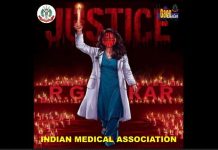
LOS ANGELES, Jan. 11 (UPI) — People under age 45 may underestimate or ignore stroke symptoms and delay going to the hospital for treatment, according to a new survey of Americans.
Researchers at the University of California Los Angeles were surprised to find nearly three-quarters of people they spoke with would wait to see if the symptoms subsided or got worse. Treatment for a stroke is critical within the first few hours in order to minimize or reverse damage to the brain.
Stroke is the fifth leading cause of death in the United States, according to the Centers for Disease Control and Prevention, killing about 130,000 people per year. There are approximately 795,000 strokes in the United States each year, about 610,000 of which are first or new strokes, the agency reports.
Previous research also has shown there has been up to a 53 percent increase in the number of strokes experienced by Americans between the ages of 15 and 44.
“Timely treatment for stroke is probably more important than for almost any other medical problem there is,” said Dr. David Liebeskind, a professor of neurology at Ronald Reagan UCLA Medical Center, in a press release. “There is a very limited window in which to start treatment because the brain is very sensitive to a lack of blood flow or to bleeding, and the longer patients wait, the more devastating the consequences.”
Researchers at UCLA interviewed more than 1,000 people about their actions within the first three hours of experiencing common symptoms of stroke such as weakness, numbness, difficulty speaking, or difficulty seeing.
Just one out of three who participated in the survey said they would be “very likely” to go to the hospital, while 73 percent of participants said they would wait to see if symptoms improved or got worse before seeking treatment.
Researchers said part of this is a lack of familiarity with the symptoms or their potential seriousness.
In addition to understanding risk factors and lifestyle decisions that can lower the risk of stroke, the researchers suggest keeping in mind the acronym F.A.S.T., which stands for: “Face drooping, Arm weakness, or Speech difficulty — it’s Time to call 911.”
“Believe it or not, it’s on the order of minutes or hours when somebody has to seek medical attention,” Liebeskind said. “There simply is no time to wait. It’s a message that we clearly need to get to younger people more effectively.”





